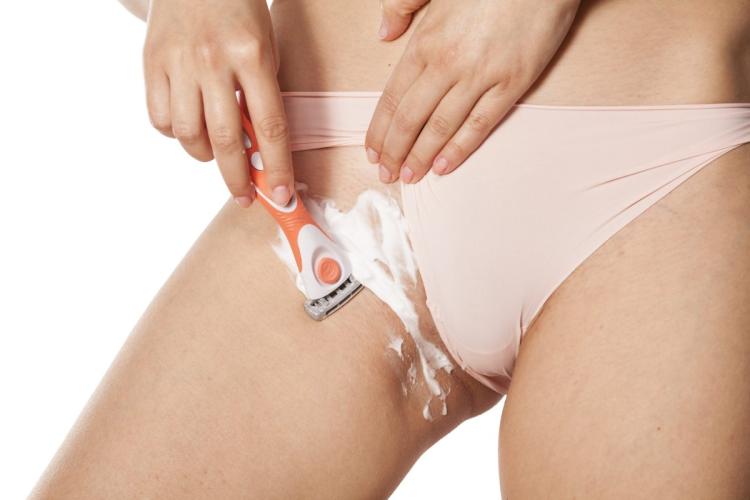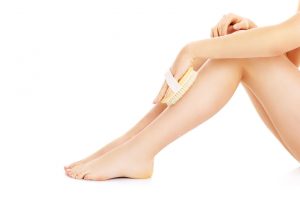There’s nothing like smooth, soft skin after a close shave. But sometimes, things aren’t so smooth or soft after shaving. Sometimes, skin becomes red, irritated, unsightly, and worst of all – painful. Razor burns and razor bumps can both be part of the – ahem – joys of hair removal.
There are measures you can take to keep those bumps and razor burns at bay. So, if you’re looking for some soothing tips in the shaving department – read on.
Razor Bumps or Razor Burns?
Razor bumps and razor burns have similar symptoms, but it’s important to differentiate between the two, so you can soothe your symptoms appropriately.
Razor Bumps
Razor bumps are scientifically known as pseudofolliculitis barbae. They’re caused by ingrown hairs. Ingrown hairs often occur after hair removal methods, including shaving, waxing, or plucking (nope – razor bumps aren’t just relegated to shaving).
A hair becomes ingrown in one of two ways:
1. The hair that remains below the surface of the skin begins to grow without penetrating through to the outside of the skin again.
2. The hair twists around and re-enters the skin after growing out.
 And it turns out, hair removal itself is a risk factor for ingrown hairs. Plucking can leave hair fragments underneath the surface of the skin. When these hair fragments begin to grow — they may not poke back through the skin. And boom! You’ve got another razor bump.
And it turns out, hair removal itself is a risk factor for ingrown hairs. Plucking can leave hair fragments underneath the surface of the skin. When these hair fragments begin to grow — they may not poke back through the skin. And boom! You’ve got another razor bump.
And shaving presents another problem. You see, razors actually sharpen the tip of the hair. And when that newly sharpened tip begins to grow out? Well, it’s better able to re-penetrate the skin and grow back into the skin – resulting in that characteristic, raised bump.1
How can you tell if you have an ingrown hair? Here are some symptoms:
- Small bumps (some filled with pus, so they look like pimples)
- Skin darkening
- Pain
- Itching
- Embedded Hairs 2
Ingrown hairs have a lot to do with the texture and growth pattern of your hair. If you have tightly curled, coarse hair — you’re more likely to battle them. For example – if you’re a gentleman with textured hair, you’re likely to experience razor bumps when shaving your beard. And ladies? You’re more likely to experience razor bumps and ingrown hairs in the bikini area.
To Prevent Razor Bumps
 Gentle exfoliation is essential to keeping ingrown hairs at bay. When hair doesn’t have to penetrate through layers of dead skin, it’ll be able to grow out more freely, instead of growing into the skin.
Gentle exfoliation is essential to keeping ingrown hairs at bay. When hair doesn’t have to penetrate through layers of dead skin, it’ll be able to grow out more freely, instead of growing into the skin.
On the body, you can use a gentle exfoliant to keep skin smooth. For the face, you can use a chemical exfoliant, like alpha-hydroxy acid, to help encourage skin cell turnover.3
And when you shave — try shaving with the grain. Shaving against the grain can trap hair under the skin and cause hair to grow inward.4 You can read more about this below.
Razor Burns
A razor burn differs slightly from razor bumps. If you have a razor burn, you’re likely to experience the following symptoms:
- Itchiness or a burning sensation
- A red rash
- Small, red bumps5
Razor burn has less to do with hair and more to do with skin. You see, when you shave, you’re removing layers of skin along with hair. And sometimes, too much skin is removed. When this happens, it can disrupt the skin barrier. The skin barrier is provided by the outermost layer of skin, which is known as the stratum corneum.
This layer is responsible for helping the skin retain moisture and for keeping out environmental chemicals and irritants. When your skin barrier is disrupted, it leaves you vulnerable to redness, dryness, and irritation.6
Here are some ways you can combat that red, irritated razor burn:
1. Aloe Vera to the Rescue
 Aloe vera comes from the aloe plant. Its effects on the skin are protective and rejuvenating. Aloe vera can help soothe skin irritation and reinstate hydration.7 And it’s affordable, too! Pure aloe vera can be purchased at most natural health foods stores.
Aloe vera comes from the aloe plant. Its effects on the skin are protective and rejuvenating. Aloe vera can help soothe skin irritation and reinstate hydration.7 And it’s affordable, too! Pure aloe vera can be purchased at most natural health foods stores.
How should you use aloe vera on razor burn? Apply the gel directly to the affected area, and gently massage it in. Allow the aloe vera to dry and absorb into the skin for at least 30 minutes. You can then rinse it with lukewarm water, or leave on indefinitely. Repeat twice a day, until relief is achieved.
As always – with new ingredients, it’s always a good idea to do a spot test to make sure your skin reacts well. And be sure to buy high-quality aloe vera without artificial colors or fragrances.
2. Don’t Dry Shave!
We’ve all been tempted and we’ll probably all reach to do it again – but never, ever dry shave. As you’ve probably experienced it all seems fine at the time, but an hour later your skin is red, rashy, scratched, and sore.
Shaving NEEDS lubrication so the razor can glide, and not scrape, along your skin. Lubrication also gets you a closer shave. But lubrication doesn’t mean running your shaver under the tap for a couple of seconds. In fact, it doesn’t mean water at all. Water is not a lubricant. You need to be using gels, oils, or creams. Or a good frothy soap.
You should also save your shaving till towards the end of your shower, when your hair and skin are nicely soaked through.
3. Try Following the Grain
Every area of your body has a different hair grain. Sometimes multiple random hair grains in one area. And, going against that grain is indeed a closer and more efficient shave. However, the trick to shaving sensitive areas is to actually follow the grain. That is, shaving in the same direction as the hair growth. As mentioned this will also help to prevent razor bumps.
Where your skin is more sensitive and your hair is thicker (like the face or bikini line), shaving with the grain can prevent skin damage and a lot of irritation. This is because there’s less skin tension on the shaving blades.
Of course, when it comes to shaving your legs you might want to stick with going against the grain as you tend to need that closer shave.
How to Get Rid of Razor Bumps and Redness
So to prevent razor bumps and razor burn – be sure to keep skin well-exfoliated, try shaving in the direction that hair grows, and soothe skin with aloe vera to keep it moisturized and irritation-free.
Article updated: March 21, 2018
For more skin & beauty tips, keep reading here:
7 Ways to Brighten Tired Eyes
Holiday Foods That Actually Slow Aging!
Sources
https://www.theatlantic.com/health/archive/2017/02/razor-bumps/516804/
https://www.ncbi.nlm.nih.gov/pmc/articles/PMC3047947/
https://www.menshealth.com/style/prevent-razor-burns
https://www.healthline.com/health/beauty-skin-care/razor-burn
























































